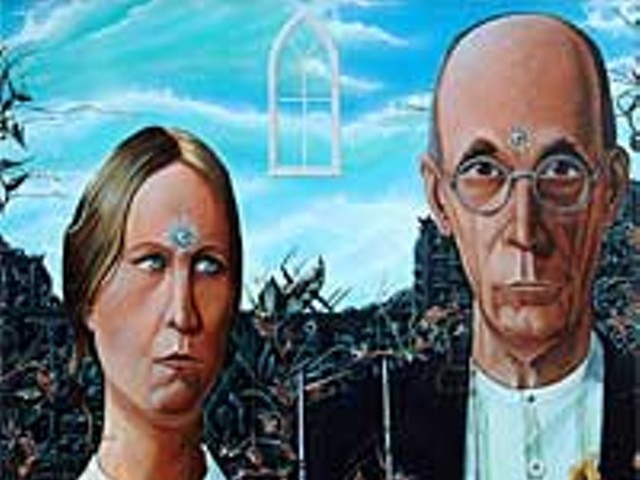Bill Schwab: The Last Ten Years is a splendid exhibition at the Halsted Gallery in celebration of the new book Gathering Calm (North Light Press, $55) — a collection of black-and-white images from the past decade taken by photographer Bill Schwab. Schwab is a Detroiter, born in 1959, who has worked other places as his career has developed and his reputation has grown. But it’s good to think of him as a hometown guy. Not in the diminishing sense that usually attaches to anything local, as in "local artist," which is often a polite way of saying that the work is derivative and second-rate. There’s nothing wrong with Schwab; he’s positively first-rate. But he is a local artist in the sense that his photographic observations are insistently local — a branch, a bunch of feathers, a tree or beach, and water, always water.
There’s more to it, though, than just the beautifully scaled locality of his observations. It’s good to think of Schwab as a guy from Detroit, because he has learned how to look at the world, and at other photographers’ ways of seeing the world, and he’s learned how to gather calm from those observations, which is maybe the profoundest lesson this place can teach a person — that you can make a believable peace, in the midst of all that is here, if you know how to see.
Schwab’s images are haiku-like in their stillness and scale; they are acute observations of nature, always finding a greater resonance in the smallest detail. Of the photographs in Gathering Calm (36 in the book, more in the show), most are from Michigan, while some others are from Iceland and elsewhere. Although looking at each, it becomes clear that geographic origin is not important. What matters is Schwab’s way of seeing; his ability to gather what he needs from the happenstance of earth, light and air. In one photograph, "Warm Summer Breeze, Lake Michigan," reeds grow along a lake shore; a breeze has caught their tops just as the camera shutter opens, so they are blurry with motion; the water and the air are luminous as they meet at the horizon line. In other images, a few blades of grass, a fern, a tree branch or some waves receding on a beach all work to the same effect, which is a calm not easy to describe, any more than you could give a plot summary of a haiku.
These are not studio photographs; they are all taken from nature, which means that Schwab is dependent on forces over which he has no control, and that makes for the wonder of the images, and for their meditative effect. He has had to wait, and to be patient and to learn what there is to know from each composition — falling water, a bare, lone tree against the horizon or a pale piece of driftwood washed up on dark gravel, such as in "Driftwood: Basalt Formation, Iceland." It’s the stuff clichés are made of, particularly for Schwab’s black-and-white medium. And that’s part of the pleasure of these photographs — their knowing refusal of a ready-made sentimentality.
The images will remind you of work by other, great photographers — Edward Weston, Imogen Cunningham, Edward Steichen, for example — and Schwab knows that, just as he knows what to do next. This becomes clear in his images of falls and rushing water, which are not so much pictures of vast scenes as they are local observations on the texture of light, which Schwab has turned into a physical presence, like oil on the surface of a canvas, something palpable that you could touch.
For people who live here, there is a further, private pleasure in Gathering Calm: the pleasure of recognition. Some of the images come from Belle Isle, and there’s one of the Rouge Ford plant; all will seem familiar. In each instance, though, the effect is not to remind you of something already known or seen, but to find new and unsuspected evidence of peace. For example, "Rouge Steel #1, Dearborn" is an image of The Rouge that is at once recognizable, whether from life or from Charles Sheeler’s photographs, or both. But again, it is not the thing seen so much as it is seeing itself, and the eloquent, nearly tranquilizing poetics of light that make Schwab’s work what it is. He is never merely quoting; he is reclaiming the already-seen world for private contemplation and the gathering of evidence.
Through June 18 at Halsted Gallery’s temporary space, 213 E. 14 Mile Rd. (PF Galleries), Clawson; 248-745-0062. Signed copies of Gathering Calm Photographs: 1994-2004 are available at the gallery or online at northlightpress.com.
Jerry Herron is a writer and professor of English and American studies at Wayne State University. Send comments to [email protected]




